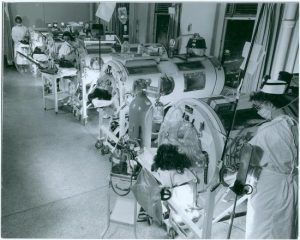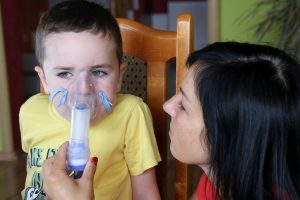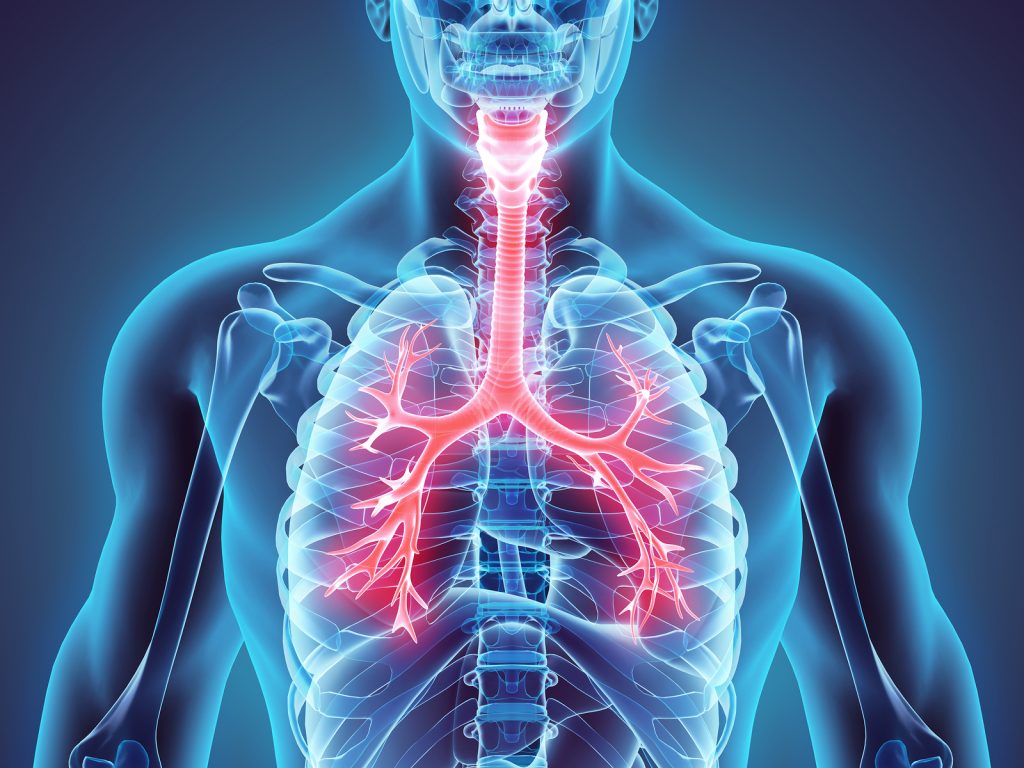Because breathing is a vital function, healthcare professional and research scientists have sought, for decades, to develop medical equipment and solutions to palliate patients dysfunctions and treat respiratory disorders and diseases. Over the past century, a series of ingenious inventions have helped to achieve this goal for the vast majority of patients, as well as contributing to improving their quality of life and the effectiveness of long-term treatment. Mechanical ventilators, masks, oxygen delivery devices and aerosols are among the advances that have contributed to these major advances in medicine.
Although apparently simple, breathing relies in reality on a complex two-stroke mechanism to supply all the cells of the organism with the oxygen they need and to rid them of the gases they produce. Several organs are involved: the lungs of course, but also the nose, sometimes the mouth, the trachea as well as the diaphragm and several other muscles controlled by nerves, themselves under the control of the brain. When all work normally, the air enters and exits automatically without requiring any special effort. But a grain of sand is enough to seize the machine and put the whole organism at risk.
Respiratory Study and Development of Medical Equipment
Nearly 2,000 years ago, Pedanius Dioscorides, the father of the pharmacy, prescribed fumigations of sulphur, and Claude Galien recommended to his patients to go and breathe on the slopes of Mount Vesuvius the fumaroles charged with sulphurous vapours, in order to overcome their respiratory affections. For several centuries, the treatment of respiratory disorders was confined to the use of aerosols and then medicines to counteract its effects.

The first machine invented to restore breathing, baptized the spirophore, dates from the end of the 19th; however, it was not until the 1950s that the first models of more advanced equipment appeared: most notably the steel lung. Associated with a tracheotomy, that was beginning to be practiced, it proved to be a valuable ally in polio epidemics in the 1950s. As a result, innovations accelerated in the field of mechanical ventilation but also oxygen therapy: oxygen concentrators that produce medical oxygen, positive pressure ventilators used in resuscitation and then, in the 1970s, development of liquid oxygen and autonomous air ventilators.
The eighties marked a radical turning point for medical equipment in the breathing industry. Knowledge of respiratory sleeping pathologies was accumulated as Nocturnal Oximetry and Polysomnographic recording technology was developed. The strong demand for the management of this syndrome led to spectacular technological advances, which made the bed of non-invasive ventilation in positive pressure by nasal mask.
Monitoring, Safety and Comfort
The appearance in the mid-fifties of the spray revolutionised the treatment of asthma. In the 1980s, improvements in the performance of nebulizers helped to better manage cystic fibrosis and pulmonary infections, followed by COPD (Chronic Obstructive Pulmonary Disease). With regard to respiratory failure, the first electrical stimulation tests of the Phrenic nerve were carried out in the mid-nineties and conveyed the hope that respiratory assistance without tracheotomy or mask would be possible one day.

Today, ventilators, physiological parameters during sleep, CPAP machines, masks, oxygen therapy equipment and nebulizers have reached a technical maturity sufficient to contribute effectively to the treatment of a large number of respiratory pathologies, especially at home.
The equipment is less noisy, efforts have been made to the design and materials; the connection systems are less visible and the masks more adjusted and more ergonomic. The ergonomics of the devices evolve to take into account the level of understanding and knowledge of users, whether they are health professionals, providers or patients.
The development of computers and then of wireless technologies made it possible to design data collection systems for remote monitoring of patients. The physician can change the settings of the machine remotely and is informed of the observance of the treatment, which can be useful to evaluate its effectiveness.
Forest Medical Equipment Calibration
As with all medical equipment, Spirometers need thorough and comprehensive testing on a regular basis. Failure to adequately test a Spirometer puts it at risk of failure or of false readings being displayed from the equipment, which can have disastrous results.
We undertake thorough Spiromter Calibration to fully test your machines and ensure that they are safe and suitable for use. In one visit, our fully trained engineers are able to quickly yet thoroughly test and calibrate all of your equipment. Once all tests and calibrations have been completed, you’ll receive a full results pack, allowing you to claim 3 QOF points and satisfy your CQC requirements. We will beat any genuine quotation by at least 15% and can promise you that all testing carried out will be accurate and will ensure that your Spirometer is completely accurate in the readings that it takes.

